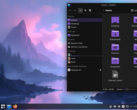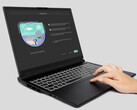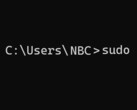"The year of the Linux desktop" is a phrase — now a meme — that signifies increased acceptance of Linux as a viable consumer OS giving strong competition to Windows and macOS. Each year, at least since 1998, has been touted to be the year of the Linux desktop, but the aphorism never came to be a reality.
But things could be changing soon.
According to the latest StatCounter numbers for June 2025, Linux has now managed to get 5.03% of the desktop OS market share in the United States between May 2024 and June 2025. Microsoft Windows still remains the market leader with a high 63.2% share, but this number is at a 13% low considering numbers over the past decade.
Among Windows versions, Windows 11 now accounts for 54.72% while Windows 10 — which held 56.04% share till February 2025, with a peak of 66.69% in December 2024 — has now fallen to 42.11% in June 2025.
Apple's OS X has a decent 16.57% of the market while the newer macOS only musters 7.72%. Combined, Apple operating systems have a 24.29% base, which is still miles behind that of Windows.
Nevertheless, these numbers indicate a significant jump in Linux market share, which finally surpasses that of the "Unknown" category at 4.76%. Chrome OS trails the pack at just 2.71%.
Linux has been seeing a steady rise in desktop adoption over the past few years. The OS has come a long way from just 2.76% in 2022, to 3.12% in 2023, 4.44% in 2024, and 5.03% in 2025.
Factor in this: it took two decades for Linux to reach a 1% desktop market share in 2011, and it took another decade to hit 2% in 2011.
The US Federal Government Website and App Analytics, which ZDNet says it prefers over StatCounter's methodology, also shows 23% Linux users visiting federal websites (factoring in Android and Chrome OS) while 11.7% of the visitors use macOS. 15.7% and 15.3% of the visitors are Windows 10 and Windows 11 users, respectively.
Microsoft's own shenanigans and the Steam Deck contribute to the rise of Linux
Windows 10 reaches end-of-support on October 14, 2025, although Microsoft is now offering ways to receive extended security updates (ESUs) for another year.
Many Windows 10 users running on otherwise perfectly capable hardware could not upgrade to Windows 11 due to its TPM requirement. It can be bypassed, but the methods aren't officially supported by Microsoft.
Windows users are also not taking it kindly with Microsoft pushing ads and Copilot in nearly all aspects of the OS — even the humble Paint and Notepad apps aren't spared.
On the other end of the spectrum, macOS is still tied to the expensive hardware it comes installed on. While there are unofficial hackintoshing methods, Apple's move to its own silicon means support for x86 Macs is nearly extinct. macOS Tahoe will be the last to support Intel CPUs. Besides, it is against Apple's EULA to install macOS on non-Apple hardware.
Besides, hackintoshing isn't a straightforward procedure, often requiring going through many hoops with a steep learning curve.
Users seem to feel this is a void that can be duly filled by Linux.
Linux is free, privacy-focused, offers endless customization, and can be generally more performant than Windows on the same hardware.
Distros like Ubuntu, Mint, and Fedora are going all out to make Linux user-friendly, and compatibility layers like WINE allow Linux users to run popular apps like Microsoft Office without much trouble.
Microsoft itself makes its own distro named CBL-Mariner for Azure, which it also uses in the WSLg backend with WSL 2, allowing native Linux apps with a GUI on Windows.
Gaming is still Windows' mainstay, but with tools like Proton and Valve's own push for Linux gaming with the Steam Deck and Steam OS, many popular AAA titles can be played today on Linux without losing big on performance or visual fidelity.
Gaming-focused distros like Manjaro, Bazzite, and Garuda Linux are seeing increasing acceptance among gamers willing to try out Linux with their game libraries.
























